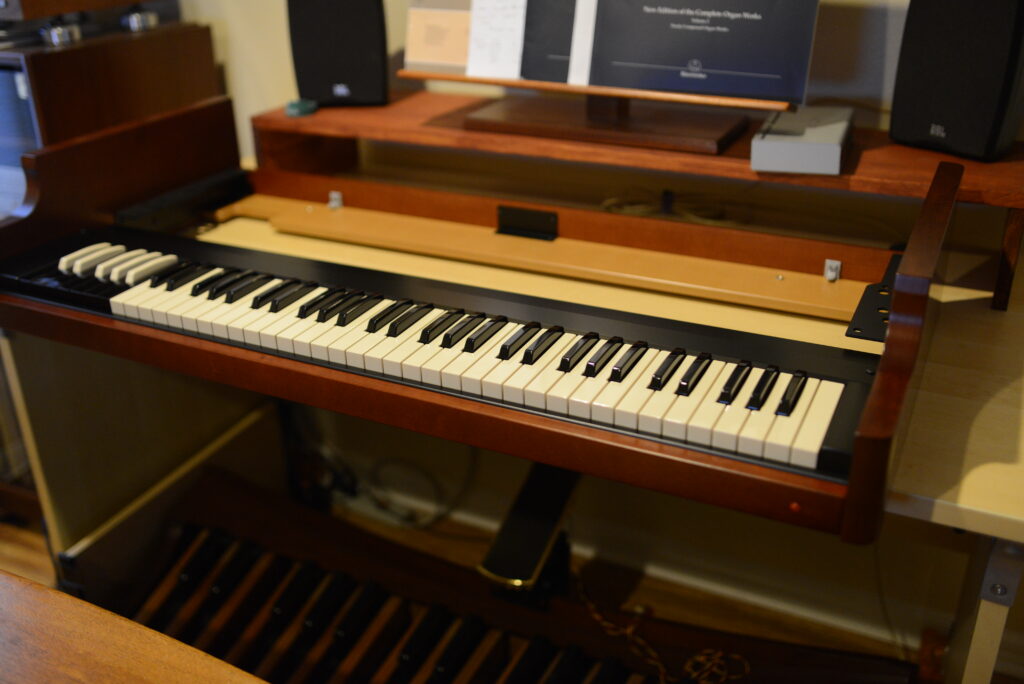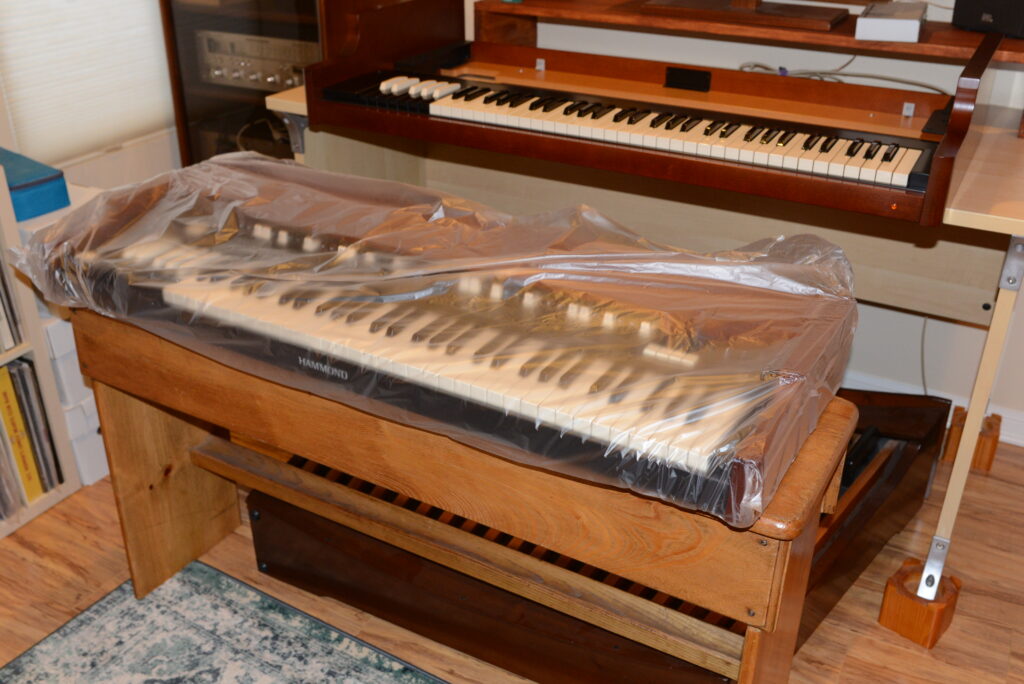The Hammond XK5 organ is revolutionizing the keyboard world with its cutting-edge system that flawlessly combines classic tone with modern technology. This incredible organ is designed to meet the needs of musicians who seek authentic sound without compromising on mobility or versatility. Whether performing on stage or working in a recording studio, the XK5 delivers an unparalleled auditory experience, replicating the iconic Hammond sound with astounding precision. The XK5 provides an intuitive system.
Azure Hills Music contains affiliate links and is a member of the Amazon Services LLC Associates Program. As an Amazon Associate, we earn from qualifying purchases at no extra cost to you when you purchase using one of these Amazon links. Read our disclaimer and privacy policy for more information.
Why I Needed A Home Organ Upgrade
For years, I’ve used a patchwork of separate keyboards, a pedalboard, and sound sources to create a practice church organ rig at the house. It kind of worked, but it has always needed improvements.
The keyboards were of different sizes and had different keyboard feels. My bottom board was an Alesis QS-8, an 88 key reliable board with weighted action. Above it, my DX7IIFD provides five octaves to serve as my swell manual. Placed on top of a homemade riser, the DX7IIFD was not in the best position ergonomically. Playing for extended periods of time placed some stresses on my arms. A 32 note pedalboard from Classic Midiworks provided the bottom end of this practice rig.

For sound sources, I have the Hauptwerk program. However, the latency was utterly unplayable with my Windows computer and present DAC (a Teac UD-501). Sometimes I would use the native sounds of my keyboards, which didn’t provide the same experience of calling up pipe organ stops. Lately, I have had a connection through my iPad to a pipe organ emulation program that works better than anything else I have used to date. Still, it felt as if I was long overdue for an upgrade.
Hammond XK5 Organ Upgrade
Enter the Hammond XK5. I wrote about this instrument in a recent blog post. I left a great impression after viewing and playing this Hammond model at NAMM 2020. I placed my order through Sweetwater, and shortly thereafter, a couple of large boxes arrived.
Unboxing and Setup
First out of the box was the bottom keyboard.

Next, we take the top manual with the drawbars out of the box. It will be nice to have two keyboards with the same touch and feel. Also helpful, will be a much better ergonomic versus the height difference between the bottom and top keyboards of my prior Frankenstein organ.

The top keyboard ships with side panels in place. This provides a finished look for musicians using just the single keyboard. However, the original panels must be detached when attaching to the XLK-5 bottom keyboard. This allows the top keyboard to slide into the entire bottom keyboard configuration. It also provides a nice, finished, complete instrument appearance from the sides.

After a fairly straightforward assembly process, our Hammond XK5 complete keyboard package is set up and ready to play.

Pedalboard Decision
I have my Hammond XK5 sitting on top of a larger desk just as I had my Frankenstein organ. Why? Well, this relates to my decisions for the pedalboard. I opted not to go with the Hammond pedalboard, at least now. Most of my paid organ work comes from a church position, so having a 32-note pedalboard is essential. So, I’m still holding on to my 32-note AGO pedalboard. Its dimensions are larger than what would fit under a Hammond stand, hence the need for a slightly larger footprint.
Hammond XK5 Sounds
The Hammond XK5 organ is a veritable powerhouse of sound, designed to replicate the iconic tones that have defined music for decades. At its core, the XK5 offers a stunning emulation of classic Hammond models like the B-3, C-3, and A-100, capturing the warmth and depth that make these organs an enduring favorite among musicians.
Beyond the traditional Hammond sound, the XK5 is equipped with emulations of the Farfisa and Vox organs, each bringing their unique voice to the table. The Farfisa emulation offers that bright, punchy sound characteristic of 60s pop and rock, while the Vox emulation delivers the signature, reedy tones that have made it a staple in psychedelic rock and pop.
Additionally, the XK5 includes pipe organ stops, allowing players to explore the grandeur and complexity of classical organ music. This versatility makes the Hammond XK5 a truly comprehensive instrument, capable of adapting to various musical styles and settings.

Conclusion
The Hammond XK5 provides hands down the best digital Hammond organ experience available. Period, no question, end of story. Also fantastic for me, is the inclusion of a set of pipe organ patches available at a swivel of the drawbar selection knob. The best of both worlds – wonderful Hammond organ for my rock band. Easy access to pipe organ stops for my classical organ practice.
Thanks for reading this article!
Arthur Dobrucki
Videos of Hammond XK5 Extra Sounds
Farfisa sounds
Vox Sounds
Pipe organ sounds




